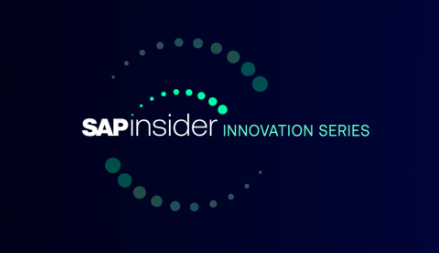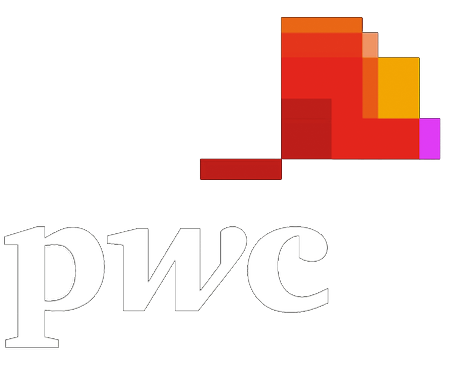SAP Supply Chain Management
SAP APO | SAP Asset Management | SAP Business Network | SAP Digital Manufacturing Cloud | SAP Digital Twin | SAP EWM | SAP IBP | SAP Inventory Management | SAP Label Printing | SAP Logistics | SAP Manufacturing | SAP Manufacturing Automation | SAP MES | SAP MII | SAP MM | SAP MRO | SAP MRP | SAP Order Management | SAP Plant Maintenance | SAP PLM | SAP Production Planning | SAP S&OP | SAP SD | SAP SPM | SAP Supply Chain Planning | SAP Track and Trace | SAP Transportation Management
Filter By
Browse By
- SAP Analytics and AI
- SAP Application Development and Integration
- All SAP Application Development and Integration
- SAP ABAP
- SAP ABAP Development Tools
- SAP ABAP Test Cockpit
- SAP API Management
- SAP BAPI
- SAP Basis
- SAP BRF
- SAP Business Application Studio
- SAP CMS
- SAP Design Studio
- SAP Development Tools
- SAP DevOps
- SAP EAI
- SAP EDI
- SAP Extension Suite
- SAP Fiori
- SAP Fiori Elements
- SAP Integration Suite
- SAP Low Code Application Development
- SAP Low Code Automation
- SAP Netweaver
- SAP Release Management
- SAP UI5
- SAP Web Application Server
- SAP Web IDE
- SAP Business Process Management
- SAP Center of Excellence
- SAP CIO
- SAP Customer Experience
- SAP Data and Data Management
- All SAP Data and Data Management
- SAP BW
- SAP BW/4HANA
- SAP Crystal Reports
- SAP Data Archiving
- SAP Data Center
- SAP Data Governance
- SAP Data Integration
- SAP Data Migration
- SAP Data Quality
- SAP Data Services
- SAP Data Strategy
- SAP Data Visualization
- SAP Data Warehouse Cloud
- SAP DMS
- SAP Document Control
- SAP EIM
- SAP ETL
- SAP ETL Tools
- SAP HANA
- SAP HANA Administration
- SAP HANA Deployment Infrastructure
- SAP HANA Studio
- SAP Master Data
- SAP Master Data Governance
- SAP MDM
- SAP Enterprise Architect
- SAP Enterprise Asset Management
- SAP ERP
- SAP Finance
- All SAP Finance
- SAP Accounting
- SAP AR AP
- SAP Asset Accounting
- SAP Billing Systems
- SAP BPC
- SAP BRIM
- SAP Cash Management
- SAP Central Finance
- SAP Controlling
- SAP COPA
- SAP Cost Center Accounting
- SAP Currency Risk
- SAP e-invoicing
- SAP FICO
- SAP Finance Automation
- SAP Advanced Financial Closing
- SAP Financial Consolidation
- SAP Financial Planning
- SAP FX Risk
- SAP General Ledger
- SAP Global Tax Management
- SAP Hyperion
- SAP Order to Cash
- SAP Payment Processing
- SAP Profitability Analysis
- SAP Rebate Management
- SAP S/4HANA Finance
- SAP SWIFT Compliance
- SAP Treasury Management
- SAP Universal Journal
- SAP Governance Risk and Compliance
- SAP Human Capital Management
- SAP Intelligent Technologies
- SAP Platform and Technology
- All SAP Platform and Technology
- SAP Business Technology Platform
- SAP Cloud
- SAP Cloud Connector
- SAP Cloud Integration Platform
- SAP Cloud Migration
- SAP Cloud Platform
- SAP Cloud Providers
- SAP Cloud Strategy
- SAP Digital Signature
- SAP Container Platform
- SAP HANA Enterprise Cloud
- SAP Digital Asset Management
- SAP Smart Forms
- SAP HEC
- SAP Digital Integration Hub
- SAP Hyperscalers
- SAP Infrastructure
- SAP Messaging
- SAP Quality and Testing
- SAP Security
- SAP Spend Management
- SAP Supply Chain Management
- All SAP Supply Chain Management
- SAP APO
- SAP Asset Management
- SAP Business Network
- SAP Digital Manufacturing Cloud
- SAP Digital Twin
- SAP EWM
- SAP IBP
- SAP Inventory Management
- SAP Label Printing
- SAP Logistics
- SAP Manufacturing
- SAP Manufacturing Automation
- SAP MES
- SAP MII
- SAP MM
- SAP MRO
- SAP MRP
- SAP Order Management
- SAP Plant Maintenance
- SAP PLM
- SAP Production Planning
- SAP S&OP
- SAP SD
- SAP SPM
- SAP Supply Chain Planning
- SAP Track and Trace
- SAP Transportation Management
- SAP System Administration
SAP Supply Chain: Supply Chain Management
A well-managed supply chain can significantly reduce a company’s operating expenses and increase profits. A supply chain requires active management because it is affected by many factors outside the control of the business. Current events causing global supply chain disruptions include the Russia-Ukraine War and the continuing effects of COVID-19.
SAP Supply Chain: Supply Chain Management
A well-managed supply chain can significantly reduce a company’s operating expenses and increase profits. A supply chain requires active management because it is affected by many factors outside the control of the business. Current events causing global supply chain disruptions include the Russia-Ukraine War and the continuing effects of COVID-19.
Supply chain management is the flow of goods or services between businesses and various locations to get goods to consumers faster and at less cost. Supply chain management encompasses a thread of activities from design and manufacturing to delivery and operations.
Components to enable a resilient and sustainable supply chain management process are:
- Designing recyclable and sustainable products
- Delivering products with low carbon impact
- Planning to reduce emissions and ethically source materials
- Operating in an energy efficient and safe manner
- Manufacturing with minimal waste and environmental impact.
Accurate information helps manufacturers and retailers produce and transport only what they can sell, eliminating unnecessary expenses. Consider simplification by integrating demand planning in the cloud. Predictive analytics, automation, and Internet of Things (IoT) technologies can connect and simplify processes, allowing you to gain visibility across forecasting, response and supply, replenishment, and inventory.
Key Capabilities of Supply Chain Management:
- Supply Chain Planning: Agile market-driven plans with visibility, collaboration, and intelligence.
- Supply Chain Logistics: Fast, efficient, and sustainable logistics.
- Manufacturing: Streamlining with artificial intelligence, loT, and integration.
- Product Lifecycle Management: Connecting systems, people, and processes with end-to-end digital innovation.
- Enterprise Asset Management: Improving asset performance and reliability.
Benefits of Supply Chain Management:
- Optimizing the flow of materials, products, and information.
- Improving data visibility.
- Enhancing financial practices and cost cutting.
- Improving vendor relationships.
- Operating with lean and on-demand inventory.
- Reducing liability and risk.
Key Considerations for SAPinsiders
- How to Deliver Greater Visibility into the Operational KPIs that Drive Your Business. In this webinar, hear insights from SAP around how to build a powerful analytics foundation. Discover how to focus less on historical KPI’s and more on predictive process automation, how to reprioritize KPIs that show historical performance, develop operational decision support for end-to-end supply chain processes, and stop development of custom reporting.
- 5 Ways to Enhance Your SCM with Smart Data. Explore expert insights from Robert Brice, President and CTO, RFgen. Start with the basics for a digital transformation of your supply chain, discover how to gain competitive advantage by implementing efficiencies, address inefficiencies, shortage of labor, and address security.
- Salling Group Expands Its Market Reach With SAP. In this article, see how Salling Group used SAP ERP to ensure data uniformity, enhance warehouse efficiency, and consolidated logistics transactions with Redwood.
558 results
-

- SAP MRP
 Premium
Premium
Real-Time Supply Chain Planning with Demand-Driven MRP in SAP S/4HANA
Reading time: 11 mins
Learn how to use the new demand-driven material requirements planning (DDMRP) method to decouple the lead time. It minimizes the bullwhip effect to achieve real-time supply chain planning in SAP S/4HANA. Key Concept The demand-driven material requirements planning (DDMRP) concept was introduced in SAP S/4 HANA 1709. DDMRP is a new planning method introduced by...…
-

Inventory Planning and Advanced Analytics
Reading time: 3 mins
Inventory planning- The constant balancing act Inventory planning is one of the most critical and most challenging aspects in supply chain planning. This means that implementing an effective inventory planning and management strategy is crucial for an organization to stay competitive in today’s dynamic global supply chain landscape. There is always room to bring more…
-

Digital Twins are on the Rise to Mitigate Risk
Reading time: 5 mins
Digital twin technology is on the rise as operational risks increase and companies search for greater efficiencies. Enterprises are discovering more uses for the data digital twins can generate from a variety of business scenarios. Companies are struggling to make their supply chains resilient. With recent port congestion, freight delays, labor shortages, material shortages, and…
-
-

Conquering the Next Disruption with a Built-to-Evolve Supply Chain
December 17, 2021
Disruption keeps rewriting the rules for supply chains, and many companies simply cannot keep up. From changing customer demand to pricing pressures to shipping bottlenecks, constantly evolving supply chains require businesses to constantly transform. Discover how you can make your business more resilient and respond at the pace of disruption with built-to-evolve Kinetic Supply Chain…
-

- SAP Supply Chain Management
 Premium
Premium
How to Connect Data, Lines of Business, Production and Logistics to Deliver a Fast-paced, Resilient and Efficient Supply Chain
Click Here to View the Session Deck. When your business depends on your supply chain, it relies on an engine that needs to keep running at a peak-performance despite constant exposure to risks that can cripple your operations. You only can grow your business and contain risk with a data-driven, digital supply chain, that is...…
-

Managing Supply Chain Disruption with Flintfox
Reading time: 2 mins
Manufacturers and wholesalers are increasingly adopting Flintfox’s intelligent pricing engine to proactively manage supply chain disruptions and optimize margins through agile pricing strategies, enabling them to anticipate market changes and minimize profit losses.
-

- SAP Supply Chain Management
 Premium
Premium
Improving Customer Service & Mitigating Transportation Disruptions with Descartes Supply Chain Visibility & Connectivity Solutions
Reading time: 3 mins
Visibility in supply chains goes beyond just tracking freight location - it involves anticipating delays, providing predictive ETAs, and optimizing operations. This broader visibility generates value across multiple departments by addressing consumer demands for swift, accurate order fulfillment and detailed delivery information. However, fragmented systems and processes among suppliers, distributors, carriers, and stakeholders hamper seamless…
-
-

Getting Supply Chain Visibility in Good Times and Bad
Reading time: 2 mins
Supply chain visibility and management in North America is enhanced through advanced technologies like Descartes’ MacroPoint platform.
-

 Premium
Premium
Improve Supply Chain
Reading time: 7 mins
Gain a critical overview of how vendor-managed inventory (VMI) reduces inventory levels and holding costs, enhances supplier visibility, and shrinks demand fluctuations. Learn how to set up master data and configure your SAP system to support VMI. Key Concept In a traditional retailer-vendor relationship, the retailer stores the inventory and maintains inventory levels, ordering more...…
-

 Premium
Premium
Make SAP Automatic Credit Management Work for You, Without Damaging Supply Chain Efficiency: Part 2
Reading time: 11 mins
Discover some best practices to help you organize your credit management in a way that benefits the supply chain. Key Concept A credit control area is an organizational unit you use to establish your credit management protocol in Accounts Receivable and Sales and Distribution. Within it, you set and control credit limits for your customers....…
Become a Member
Unlimited access to thousands of resources for SAP-specific expertise that can only be found here.
Become a Partner
Access exclusive SAP insights, expert marketing strategies, and high-value services including research reports, webinars, and buyers' guides, all designed to boost your campaign ROI by up to 50% within the SAP ecosystem.
Upcoming Events
Related Vendors
Your request has been successfully sent


